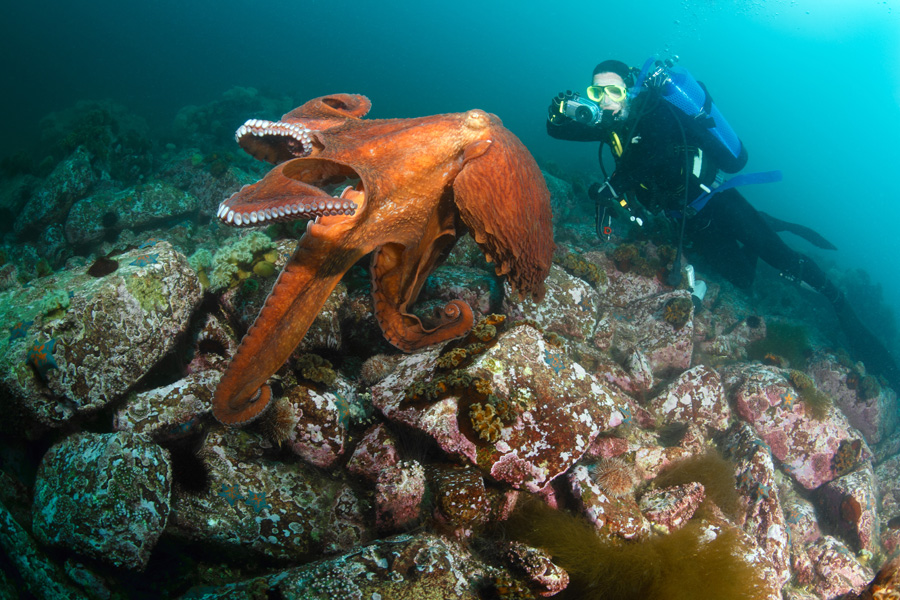You don’t want to be my dive buddy. I can’t help it; I’m a photographer. I get distracted.
As divers gain skills and experience, they tend to specialize. Maybe you’re also a photographer, or a wreck diver who has found something unique and new. The specifics don’t matter; as divers build confidence and develop specialized interests, ‘dive buddy discipline’ can suffer.
Words and photos by George Moakley
I understand the importance of being a good dive buddy (I’m a PADI IDC Staff Instructor). But, if you’re a serious underwater photographer or videographer, you’ve probably lost track of a dive buddy that didn’t notice you while following that really cool fish through the kelp to get the perfect shot. You may have found yourself surprised by how quickly you breathed down your air while struggling to position yourself against the surge to get the camera at just the right angle, or while timing your shots while that kelp frond moved back and forth in the surge across your intended photographic subject. I know I have…
Usually these scenarios result in nothing more than good-natured teasing, but they could lead to real problems. Here are a few strategies to improve underwater photography safety.
First, plan your dive and dive your plan. Make sure you and your buddy have compatible goals for your dive. As a macro photographer, I’ve spent entire dives thoroughly exploring an area the size of the average kitchen table. My preferred dive buddy is either another photographer or a VERY patient friend who’s willing to periodically remind me to check my pressure gauge to make sure I’m not running out of air.
If you’re frequently a ‘focused diver’, seriously consider a dive computer that either has a ‘heads up’ display in your mask, or offers alarms for low air, depth, and nitrogen and oxygen exposure. A number of dive computers also support integration with a buddy’s sending unit for photographers that get overly ‘focused’.
For several reasons, a pony bottle should be considered as an emergency air source. First, there’s a fair chance your dive buddy will have lost track of you if he/she doesn’t share your passion. Secondly, if your buddy IS a photographer, he/she may be too focused on a photographic subject to see your ‘low on air’ hand signal. Either way, you may have difficulty getting your dive buddy’s attention when you need it most. If you use a pony bottle, choose one that has enough capacity to comfortably support a safe ascent with a decompression stop. I dive with a 19 cubic ft pony bottle. I’ve never used it and hope I never will, but it’s good to know it’s there.
For photographers especially, proper buoyancy control is critical. Invest the time to really master your buoyancy control, and experiment with different strategies. It’s not unusual to see me ‘head down’/’feet up’ to get the shot (CAREFULLY if I’m in my drysuit!) When I’m dealing with a strong surge, I’ll make myself negatively buoyant IF I can see that it’s safe to rest on the substrate. By ‘safe’, I mean I’m as concerned with not damaging delicate organisms, as I am with making sure I don’t puncture myself with an urchin spine (or worse). By ‘rest’, I mean touching down on my fin tips (remember fin pivots?).
In addition to underwater photography, there are so many specialties available for diving. Talk to the professionals at your local dive shop about equipment options relative to your preferred interests, and the courses available based on your interests. You’ll not only learn more, you’ll have a great time, enjoy safer diving, and meet others who share your interests.
And there’s nothing like experience – keep diving!
Words and photos by George Moakley


